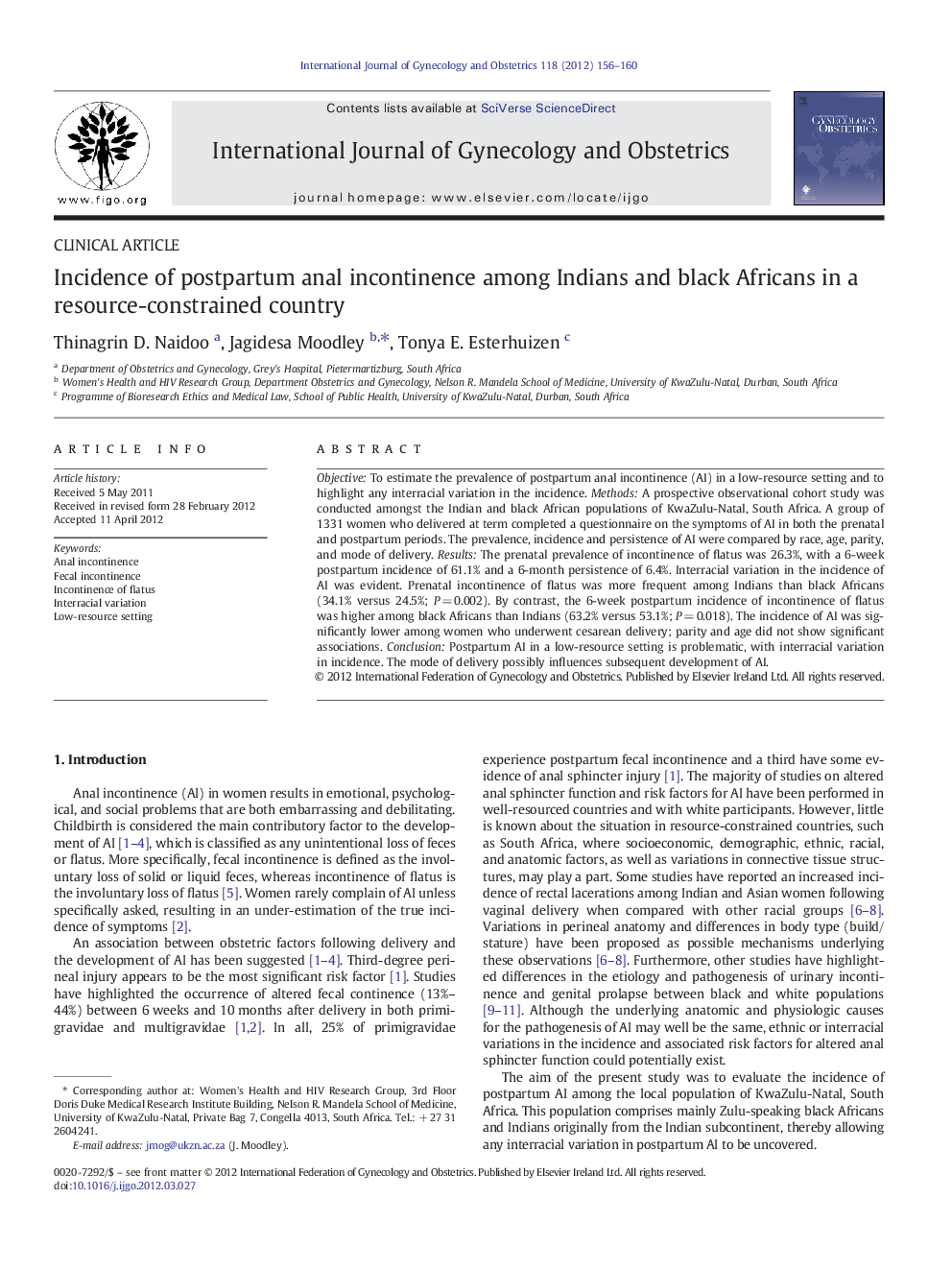| Article ID | Journal | Published Year | Pages | File Type |
|---|---|---|---|---|
| 3954352 | International Journal of Gynecology & Obstetrics | 2012 | 5 Pages |
ObjectiveTo estimate the prevalence of postpartum anal incontinence (AI) in a low-resource setting and to highlight any interracial variation in the incidence.MethodsA prospective observational cohort study was conducted amongst the Indian and black African populations of KwaZulu-Natal, South Africa. A group of 1331 women who delivered at term completed a questionnaire on the symptoms of AI in both the prenatal and postpartum periods. The prevalence, incidence and persistence of AI were compared by race, age, parity, and mode of delivery.ResultsThe prenatal prevalence of incontinence of flatus was 26.3%, with a 6-week postpartum incidence of 61.1% and a 6-month persistence of 6.4%. Interracial variation in the incidence of AI was evident. Prenatal incontinence of flatus was more frequent among Indians than black Africans (34.1% versus 24.5%; P = 0.002). By contrast, the 6-week postpartum incidence of incontinence of flatus was higher among black Africans than Indians (63.2% versus 53.1%; P = 0.018). The incidence of AI was significantly lower among women who underwent cesarean delivery; parity and age did not show significant associations.ConclusionPostpartum AI in a low-resource setting is problematic, with interracial variation in incidence. The mode of delivery possibly influences subsequent development of AI.
